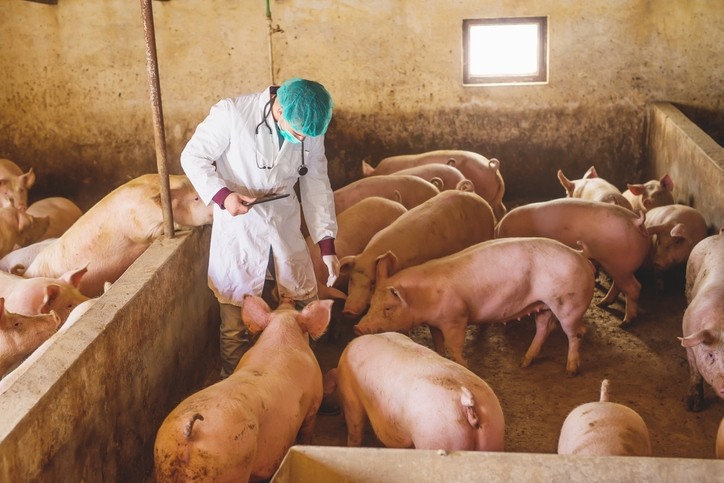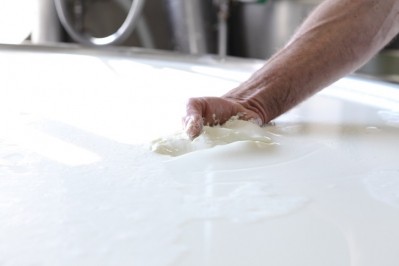ASF spread sparks AFIA biosecurity guidance review, suggestions

The American Feed Industry Association (AFIA) released new biosecurity guidance on Thursday [January 31] in response to the outbreak of several animal diseases including African swine fever (ASF).
AFIA’s previous biosecurity guidelines were developed following the terrorist attacks on September 11, 2001, said Paul Davis, director of quality, animal food safety and education with AFIA. However, the guidelines were always intended to be a “living” document that could be amended to address new or emerging threats.
“While some threats aren’t at the back door yet, it doesn’t mean we can leave the door unlocked,” he said. “Our industry must be vigilant about continually improving its biosecurity programs for the protection of animal and human health.”
The AFIA has been working with researchers, the government and members of the pork industry for several months to establish the new guidelines in consideration of data related to how viruses are potentially able to spread during feed manufacturing.
The revised guidance focuses on ways to improve onsite biosecurity programs, check suppliers and address best practices for facility employees and visitors, the association said. The project also established a definition for “biosecure” as there is no regulatory definition.
“A ‘biosecure facility’ is a facility that has adopted procedures to reduce the risk of pathogenic microbes being transmitted into or contaminating the final animal food product,” the AFIA said regarding the working definition created with input from members and pork industry stakeholders. “These procedures may vary depending on the animal food product produced, the disease status of the country or region where the facility is located, and where the facility's ingredients are sourced.”
Along with work on the guidance document, AFIA, and its related charity, the Institute for Feed Education and Research, have been supporting research on bio-safety, it said. The projects include examining the effectiveness of proposed feed and feed ingredient holding times put forward by the Swine Health Information Center (SHIC).
US swine industry members also have been exploring ways to prevent the spread of diseases like ASF into the US, Paul Sundberg, executive director of SHIC told us previously.
“We want to do anything that we can do to shut any possible window of opportunity to introduce the virus into the US,” he said of the group’s work on the use of feed holding times to address the risk of ASF being imported to the US.
That project looked at calculating potential half-life times for viruses, including ASF, that might be present in feed or feed ingredients, according to SHIC information. However, details on the effort were released for educational purposes, as more work was need before any recommendations could be made.
Disease survival and movement background
The Swine Health Information Center has been studying several swine diseases include the porcine epidemic diarrhea virus (PEDV) and African swine fever virus (ASF) for some time to see if the viruses have the potential ability to survive for periods of time in feed or feed ingredients.
The work was a follow-up on an initial study that found PEDV could potentially survive in feed ingredients during a 37-day import process.
Of the viruses tested for the ability to be viable following import from a foreign country, ASF was found to potentially be able to survive in conventional and organic soybean meal, soy oil cake, choline, cat and dog food and complete feed.
ASF outbreak and spread
The presence of ASF in China was initially confirmed in August.
Since then there have been cases reported in 25 provinces across the country including, most recently, in the Gansu and Ningxia provinces, according to a monthly global disease surveillance report from SHIC. An outbreak at a farm in Jiangsu with about 69,000 pigs also was reported in January.
In addition to reported cases in China, the disease has been detected on pork products confiscated at airports in Australia, SHIC said. South Korea, Japan and Taiwan also have noted the presence of ASF in products collected at ports of entry since August.
The US Department of Agriculture told SHIC that there are mitigation measures in place to “prevent the introduction of the disease through imports.”
There is not a protocol for testing pork products collected for ASF, however, all seized products are treated as though they are contaminated, the department added.
In addition to the outbreak in China, the disease continues to be present in Belgium in wild boar and France is taking steps to address the disease, SHIC said in its report.
The Department of Environment, Food and Rural Affairs (DEFRA) in the UK also had made a risk assessment of the disease’s potential entry.
An outbreak of a foreign animal disease in the US is of high concern, the center said.
Biosecurity guidance overview
The goal of the guidance is to provide recommendations that feed or feed ingredient manufacturers can use to generate a biosecurity plan to address the potential spread of animal disease through feed or feed ingredients, the AFIA said.
However, every facility or business needs to address its own potential hazards and risks and set procedures to implement the plan, the association said.
“The scope of this guidance document is focused on the development of biosecurity practices for feed and ingredient manufacturers to control biological hazards that may contribute to the spread of animal diseases, both foreign and domestic,” the association said.
Steps to develop a biosecurity plan include identifying what are potentially foreseeable animal disease hazards and examining the risks of those hazards, the AFIA said.
“Feed contamination with a disease-causing pathogen can be introduced at numerous points throughout the manufacturing process, including through the use of contaminated ingredients, during receiving at the feed manufacturing site, cross-contamination within the feed manufacturing facility, and by delivery vehicles (both incoming and outgoing) and delivery personnel,” the association said. “Potential hazards should be identified, evaluated and prioritized.”
In addition to the manufacturing process, supplier verification can be done to establish that a given supplier has an appropriate program in place to control for contamination of the ingredient they supply, the AFIA said. If that process is lacking, a feed manufacturer can add a testing or risk mitigation process at the supplier’s location as part of its process.
Once created, the biosecurity plan needs to be shared with facility personnel and education and training can be provided when starting use of the plan, the association said.
The implementation of the plan also needs to be checked and corrective steps taken when deviations occur.
EU trade group's position
In relation to ASF transmission, the European Feed Manufacturers' Federation (FEFAC) said, in November last year, that it had been regularly reviewing and updating its risk analysis, taking into account the latest risk assessment advice by public risk assessment bodies and the experience gained by feed industry organizations in the EU and worldwide.
“It must be stressed, in particular, that risk assessment by EFSA does not point to animal feed as a cause for virus transmission, with the noticeable exception of feeding pigs with catering waste. The conclusion drawn by FEFAC is that the risk of commercial feed being intrinsically a vector of transmission of ASF is negligible insofar as effective biosecurity measures are in place all along the chain, in particular for feed transport in infected zones.”
FEFAC said the European and global feed industry would continue investigating the latest scientific publications on effective processing technologies that can inactivate viruses, on reliable detection methods and on sampling methods for feed in cooperation with chain partners and risk assessment and management bodies at national and global level.














